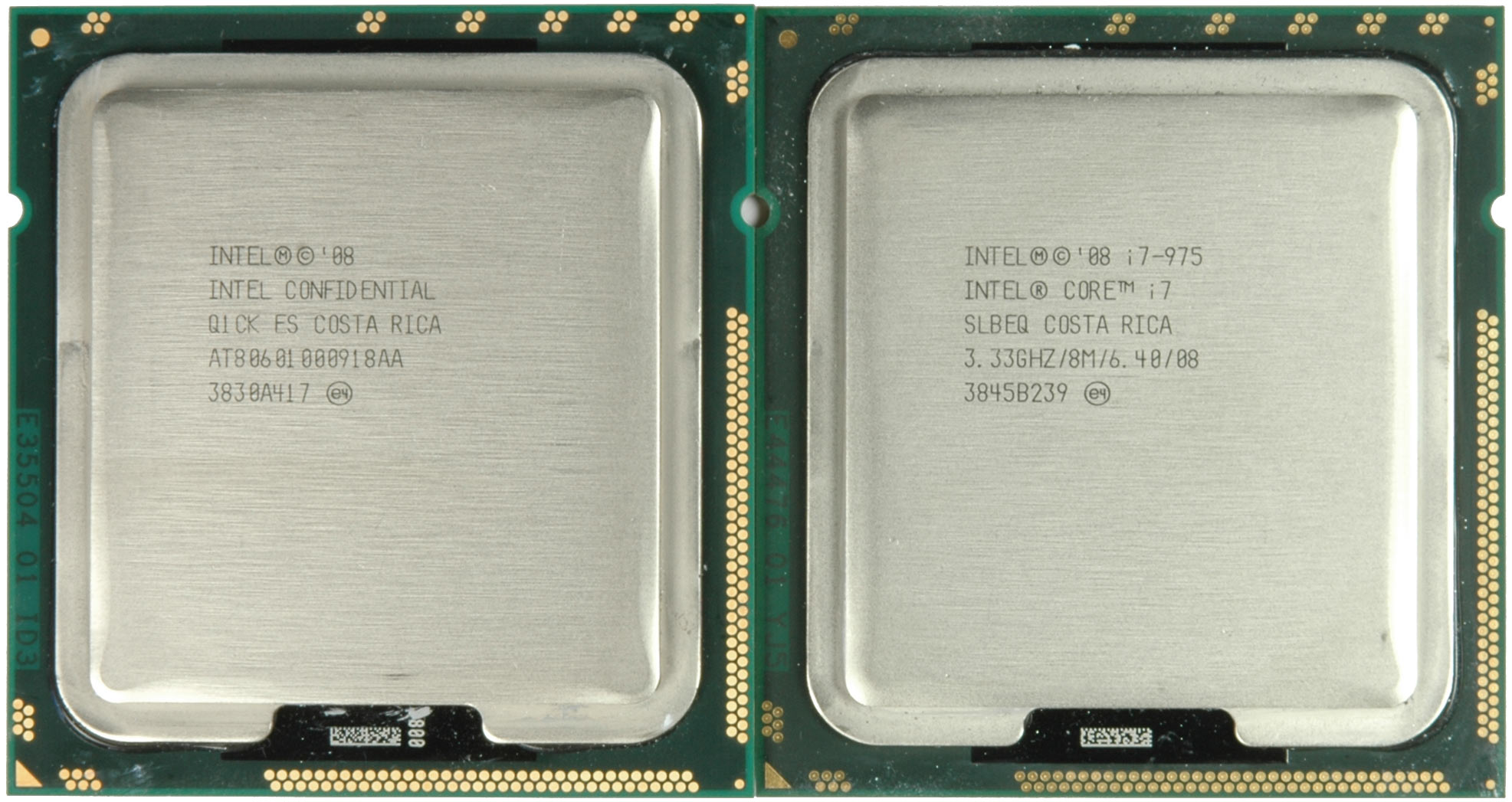Under Core i7's Hood: Comparing The C0 And D0 Steppings
Core i7 Extreme: 965 (C0) Versus 975 (D0)
Our initial review of the Core i7 processor will tell you all the details you need to know about Intel’s current flagship product. All Core i7 processors utilize four processing cores with 256 KB L2 cache each. They share a common 8 MB L3 cache, and the processors also support Hyper-Threading, giving the operating system twice the number of virtual cores as physical ones. Intel employs this feature to better utilize the cores’ 14-stage processing pipelines.
Initial Core i7 processors were all based on the C0 stepping, which allowed users to reach a bit more than 4 GHz clock speed on air or up to about 5 GHz on liquid nitrogen.
Intel officially introduced the D0 stepping with the release of the first speed bump, the Core i7 Extreme 975 (though enthusiasts were digging up Core i7-920s before the 975 actually debuted). Most of the slower versions are now also available with D0 stepping as well. We recommend checking Intel’s ARK (Automated Relational Knowledgebase) for details.
Core i7-950 is only available as D0, since this is one of the last additions to the lineup. Be careful with i7-920 models, since these are available in C0 and D0 versions.
You generally won’t find much information from Intel about the changes from one stepping to the next. Intel sticks to that habit with C0/D0 on the Core i7, as it is considered an incremental stepping.


Get Tom's Hardware's best news and in-depth reviews, straight to your inbox.
Current page: Core i7 Extreme: 965 (C0) Versus 975 (D0)
Prev Page Hardware: MSI X58 Pro-E And Zalman CNPS 10X Next Page Core i7-965 (C0) Versus Core i7-975 (D0) At 3.33 GHz